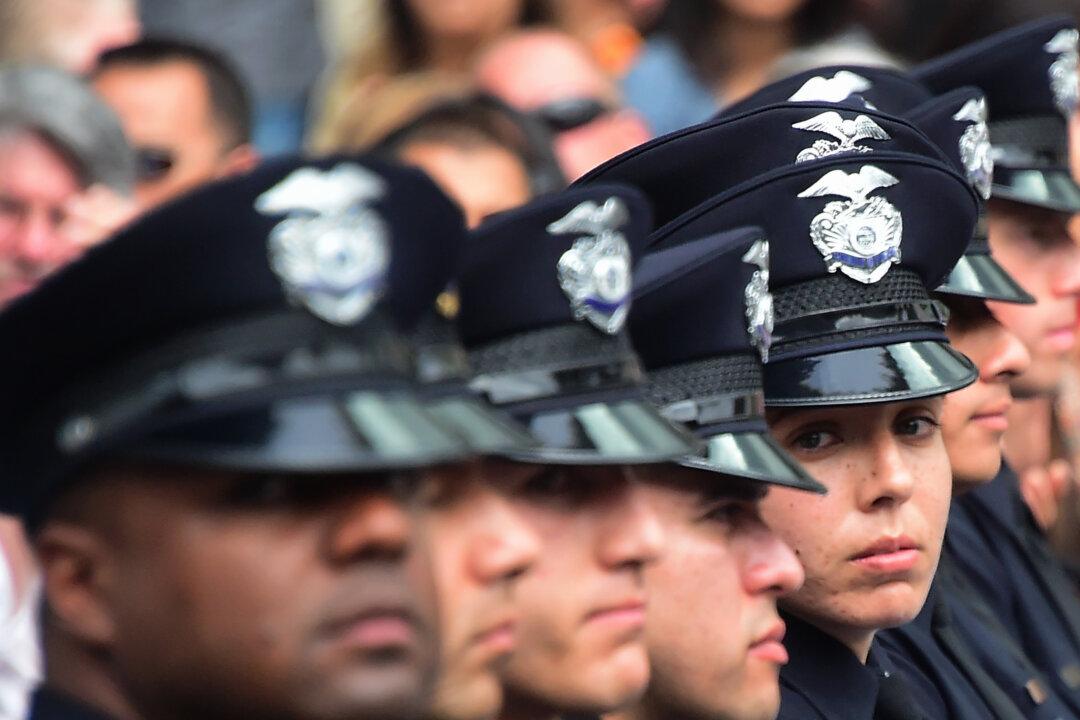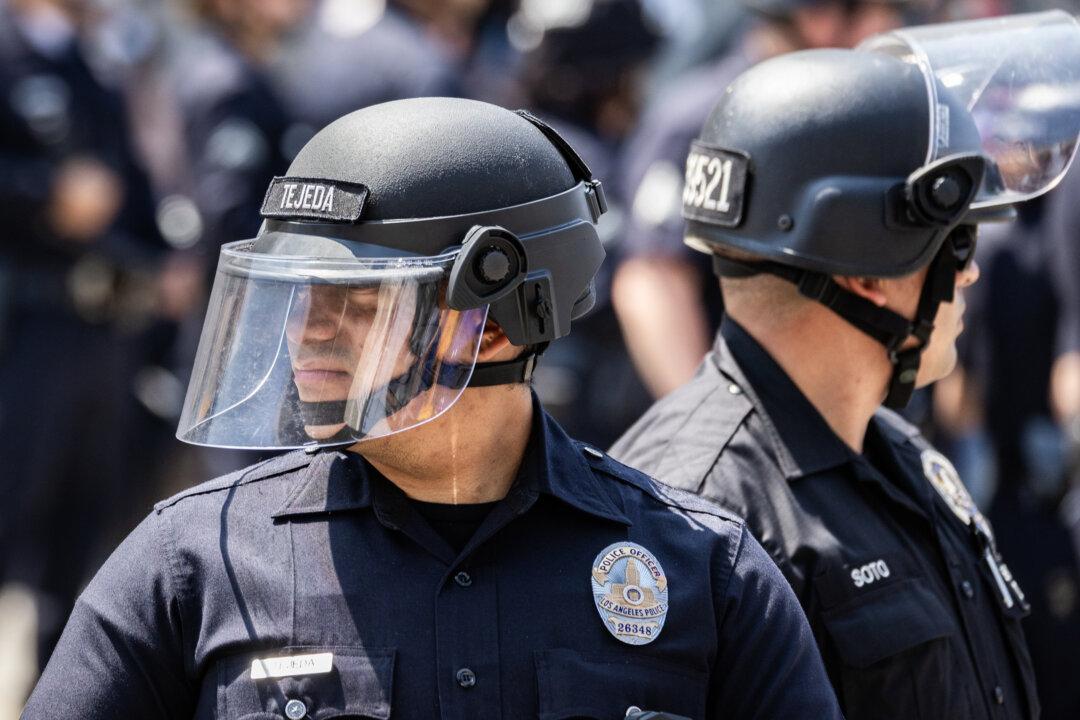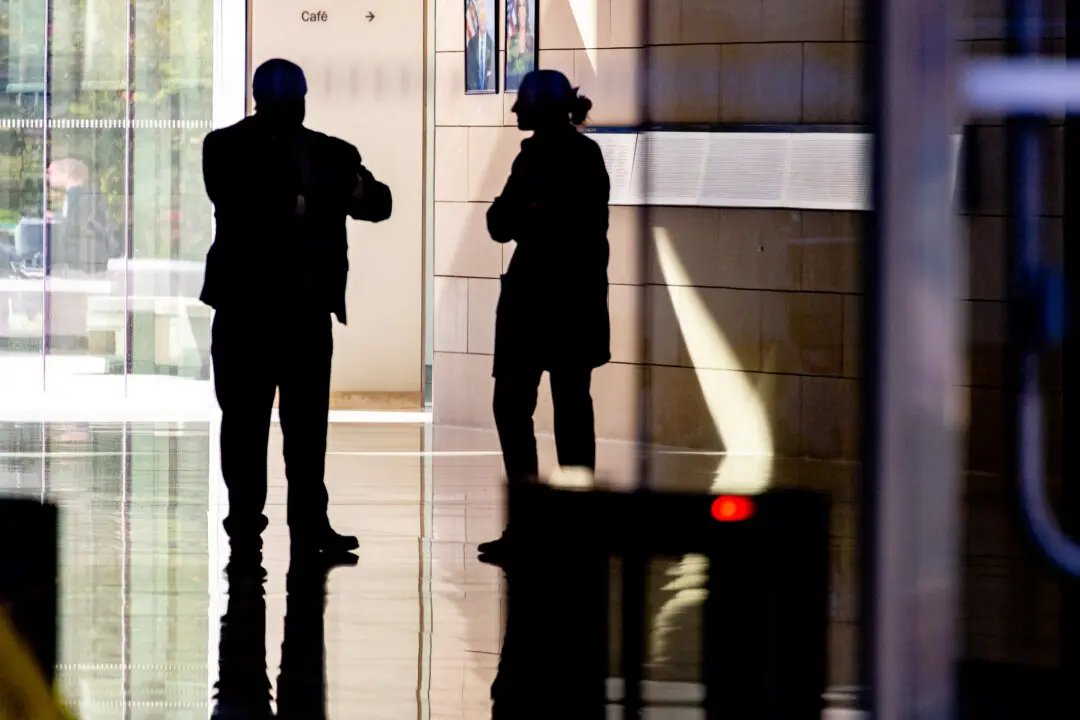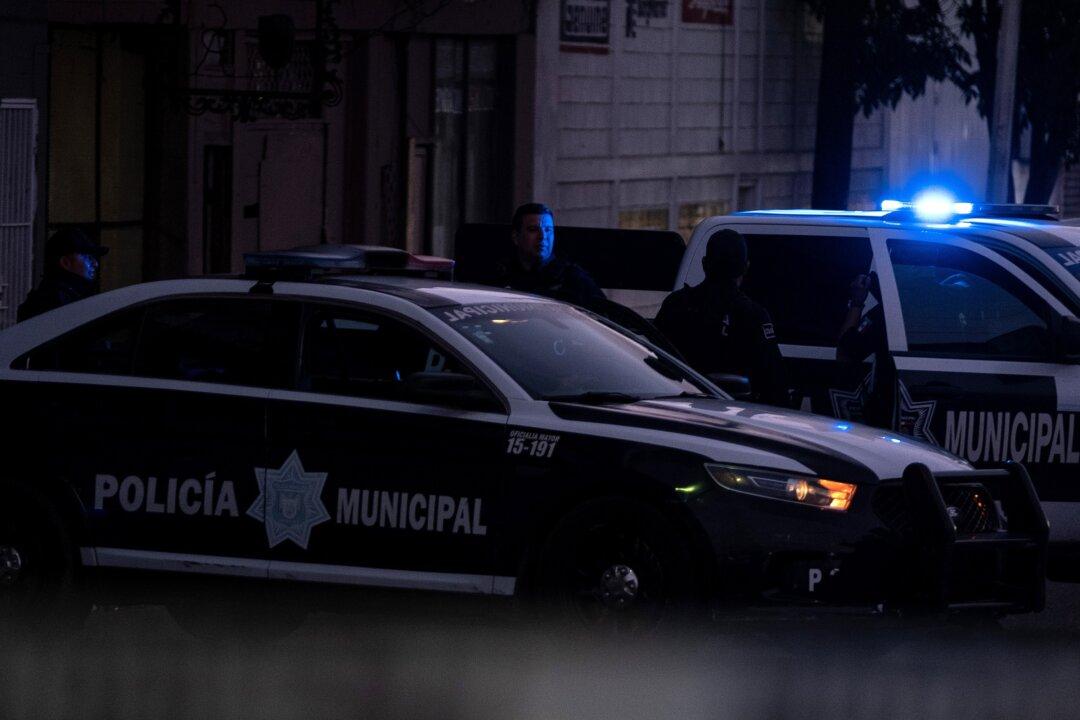LOS ANGELES—Another large group of Los Angeles police officers with sensitive assignments has taken legal action against the city, alleging their safety was impacted by the release of department photographs earlier this year through the California Public Records Act.
Prior to the department making the photos available, the officers went to great lengths to keep their identities concealed, according to the Los Angeles Superior Court lawsuit filed on Sept. 5 on behalf of more than 140 current or retired plaintiffs identified only as Jane and John Does.





